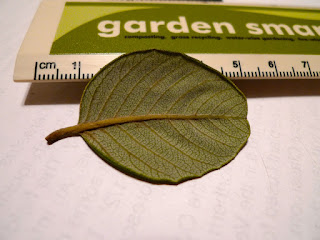hoary |ˈhôrē|
adjective ( hoarier , hoariest )
1 grayish-white : hoary cobwebs.
• (of a person) having gray or white hair; aged : a hoary old fellow with a face of white stubble.
- [ attrib. ] used in names of animals and plants covered with whitish fur or short hairs, e.g., hoary bat, hoary cress.
There are at least 52 species of ceanothus in the world. California is home to 43 species, sometimes known as California lilac, and 13 of these are native to the chaparral of Southern California. The dominant species in our local, lower-elevation, Santa Monica Mountains is Bigpod Ceanothus, Ceanothus megacarpus. However, at higher elevations it is replaced Ceanothus crassifolius, Hoary-leaved Ceanothus.
Plants in the genus Ceanothus are divided in to two groups - the subgenus Ceanothus and the subgenus Cerastes. The later is actually the larger group. But, I think that most of us, thanks to its showy displays, are more familiar with the former which is characterized by thin leaves that have three main veins, arrayed alternately on the stems. The leaves of Cerastes are leathery with a single main vein, and generally opposite in arrangement.
A member of the Buckthorn family (Rhamnaceae) it is a large, evergreen shrub which may grow to twelve feet in height. The leathery olive green leaves have white fuzzy undersides, which makes them hoary. The field guides I use describe the leaves as being “small”, which seemed a bit vague. An internet gardening catalog stated they they are 1/4 to 1/2" long. However, I took some measurements on a specimen at Rancho Santa Ana Botanic Garden and found them to be closer to 1-1 1/2”. Which reminds me of the old taunt - “Who are going to believe, the facts or your lying eyes?” The small (truly about a quarter of an inch), rounded flowers are white with the inflorescences borne on short stalks.
Hoary-leaved Ceanothus is distributed through the Outer South Coast Range, Transverse Range, Peninsular Range, and Northern Baja on dry ridges or slopes below 3700'. Which is to say locally we can find it in the Verdugo, San Gabriel, Santa Monica and San Bernardino Mountains.
There are plenty of chances to see it, let’s go look.






